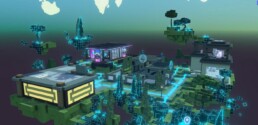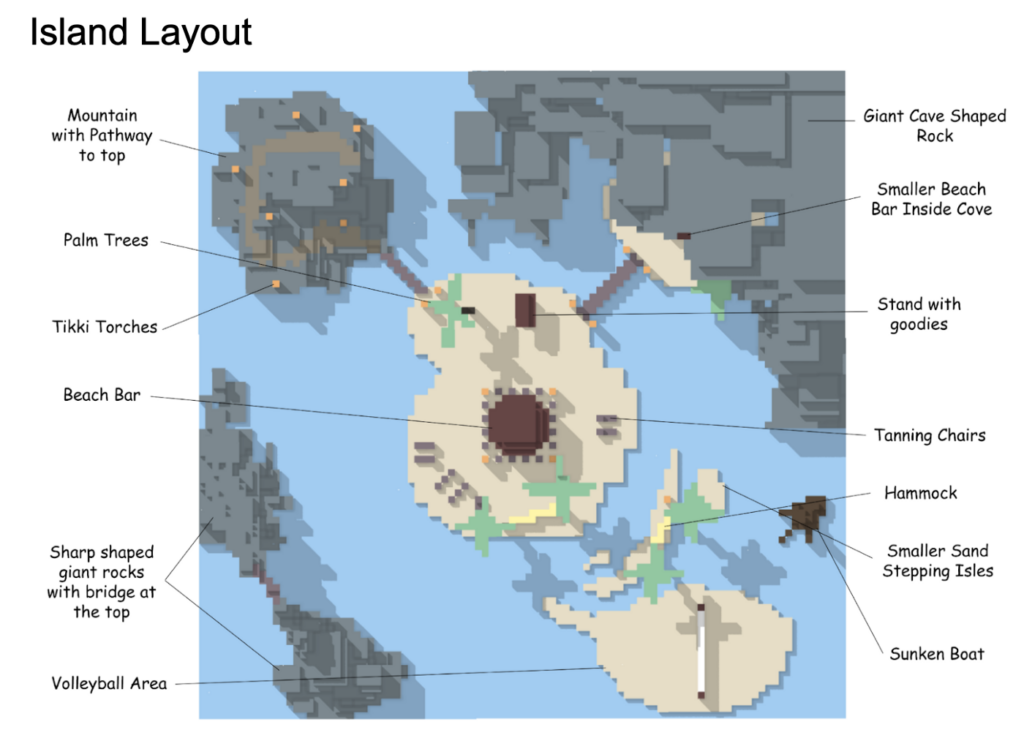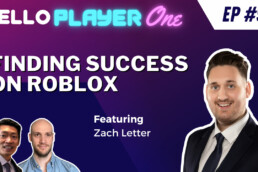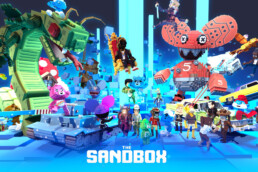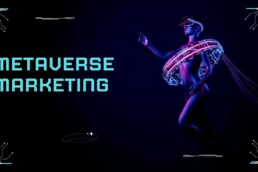The social hub is the place that players will start their experience with your brand. It’s similar to your brand’s homepage in the web 2.0 sense, or your brand’s Facebook / Instagram page.
Here’s our process to designing and building amazing social hubs in The Sandbox Metaverse.
Steps
1. Ask questions to help guide the design
2. Get inspired
3. Create concept drawings
4. Create custom assets
5. Build and iterate
Start with Questions
Asking questions helps us start with the end in mind. Here are ones that we ask our clients.
How do you want players to feel when they explore the social hub? This might be the most important question, because emotions will help a brand to retain in a person’s mind. Here’s an example of two brands and how I feel about them:
- Apple — makes me feel productive, because it has great design. It removes all clutter and allows me to focus on the task at hand
- Honda — make me feel confident, that it will get me from point A to point B 99.9999% of the time.
Do you have a theme in mind? Medieval, modern, futuristic, playful, Asian-inspired, etc. If you don’t have a theme in mind, think about how you would like the brand to be perceived.
Is the brand about being fun? Is so, then almost certainly the social hub needs to have bright colors
Is the brand about being in the future? For example, pretty much everything in crypto is about forward-looking. In this case, the social hub needs to be sort of modern / futuristic theme. What would the brand be telling players if the social hub was an antique medieval castle?
What are the 2–3 main features of the social hub? These 2–3 things are going to be the main focal points of the social hub. Is there going to be a huge castle? How about a giant sakura tree? Is there going to be a high-speed rail?
How much LAND will be devoted to just the social hub? 1×1, 2×2, or more? Are you planning to build up or spread out? This has to be decided up front right now. For example, if you created the social hub on a 1×1 LAND, but then decide later to import it into a 1×1 section of a 3×3 LAND (because you’ve expanded), you cannot just copy and paste it. There is no feature that allows you to do that at the moment. That 1×1 area would need to be completely re-built on the 3×3.
What’s the area that the players will meet for social gatherings? Can that location fit 50, 100 players? Let’s say for example the big meeting area is inside a building. To make it not feel cramped, it’s likely going to need super high ceilings. Something like 15–20 blocks tall will probably suffice.
Will there be an an exclusive VIP area? This feature is not implemented yet but we all expect it to be available, especially because Decentraland already has this. How it would work is that certain areas of the map would gate players based on what NFT they have. For a particular NFT collection, the map could restrict certain areas to collectors who hold 10+ NFTs, or ones who spent the most, etc.
Get inspired
In this step, we try to get inspired by pulling as many images we can find on a particular theme. We like to use Minecraft images because they are voxel in nature so it gives an accurate sense of what the build will look like. And there are a LOT of structures that have been created in the 10+ years it’s been around.
Minecraft builds are great because they’re not limited by physics, like in the real world. So you can very unique experiences. And we should all think like this, as metaverse natives rather than real-world architects building something in the metaverse.
We also like to pull reference images that are very different, so we can narrow down what our clients absolutely don’t like.
For now, let’s get inspired by looking at some a few really awesome Minecraft builds.
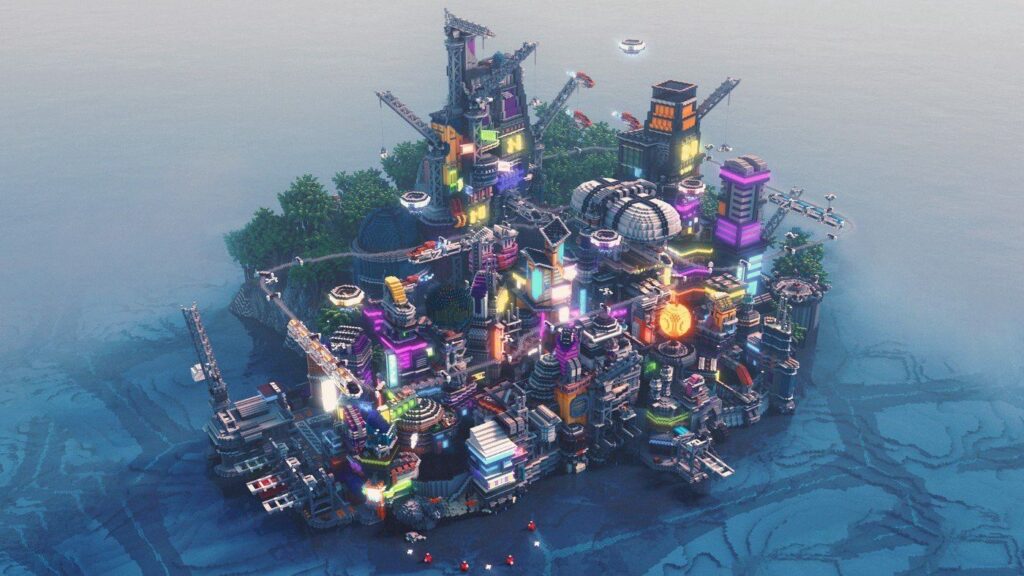 https://www.planetminecraft.com/project/hive-city-4561456/
https://www.planetminecraft.com/project/hive-city-4561456/
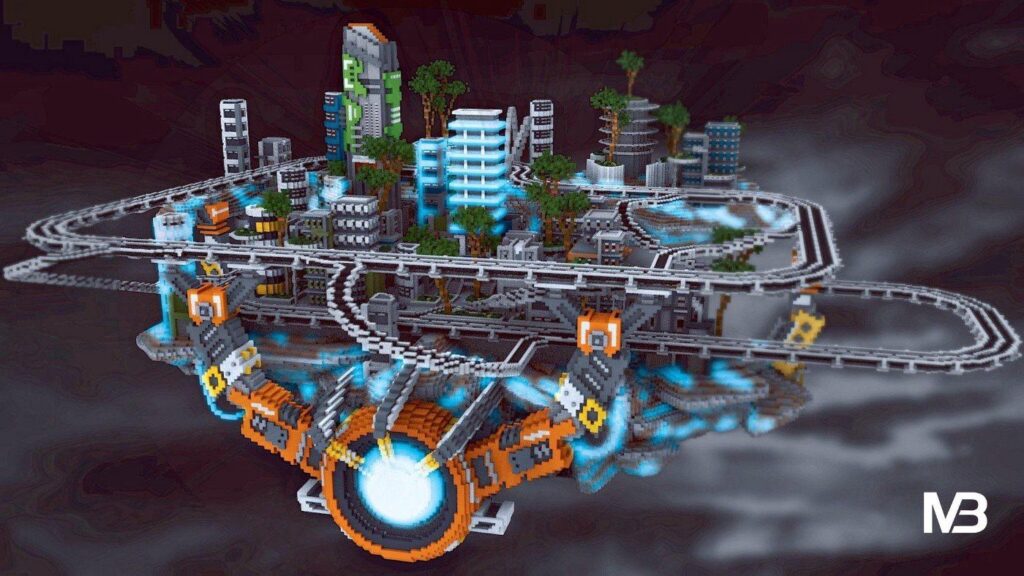 https://www.planetminecraft.com/project/city-of-undefined-gravity/
https://www.planetminecraft.com/project/city-of-undefined-gravity/
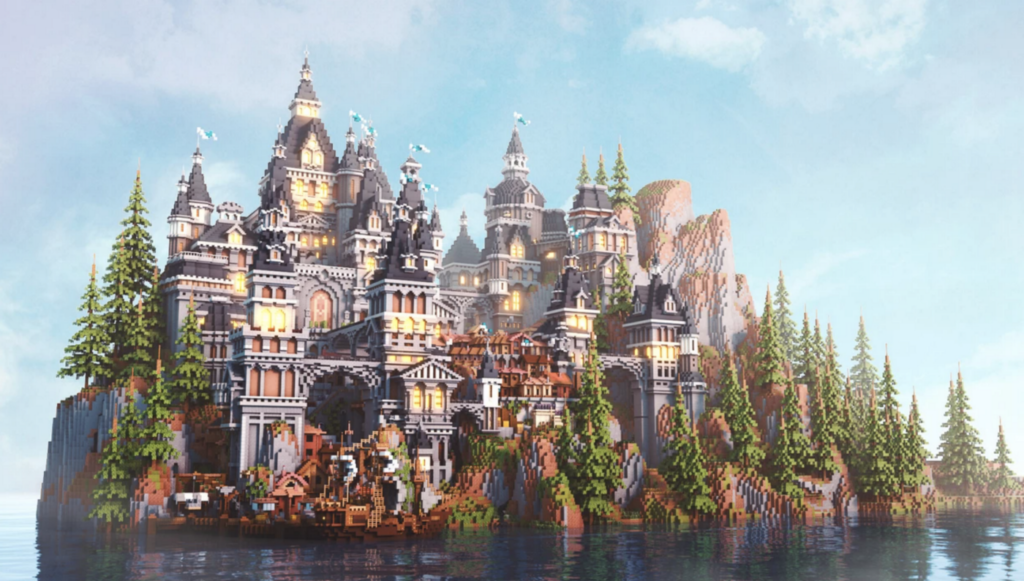 https://www.planetminecraft.com/project/pearl-bay-fortress/
https://www.planetminecraft.com/project/pearl-bay-fortress/
Create Concept Drawings
We found this step absolutely necessary for anything bigger than a 1×1 or if we have to build the interiors. With interiors, we have to be much more accurate with our planning because there’s more detail to be worked out.
Our team uses a software called MagicaVoxel. Having a concept drawing is like having a schematic and it makes it really easy for our builder to create it block by block.
Below is how it works for us in a build.
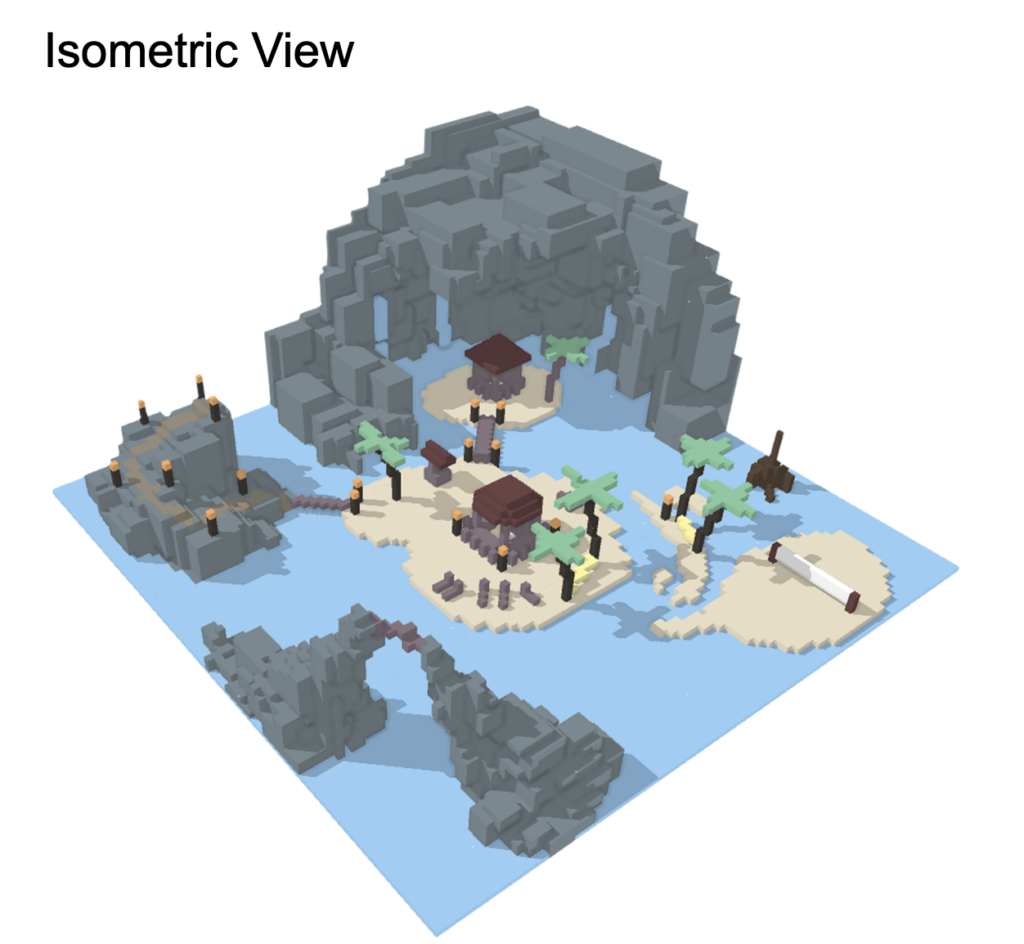
 The final product so far in The Sandbox
The final product so far in The Sandbox
Identify and Create Custom Assets
There are indeed a good number of default, free assets available to use in the GameMaker software. But we’ve found that every build will need custom assets.
Custom assets are identified by both the creative director and the builder on our team. Early on, when our team pulls reference images, we can see what things would look cool to put in a build.
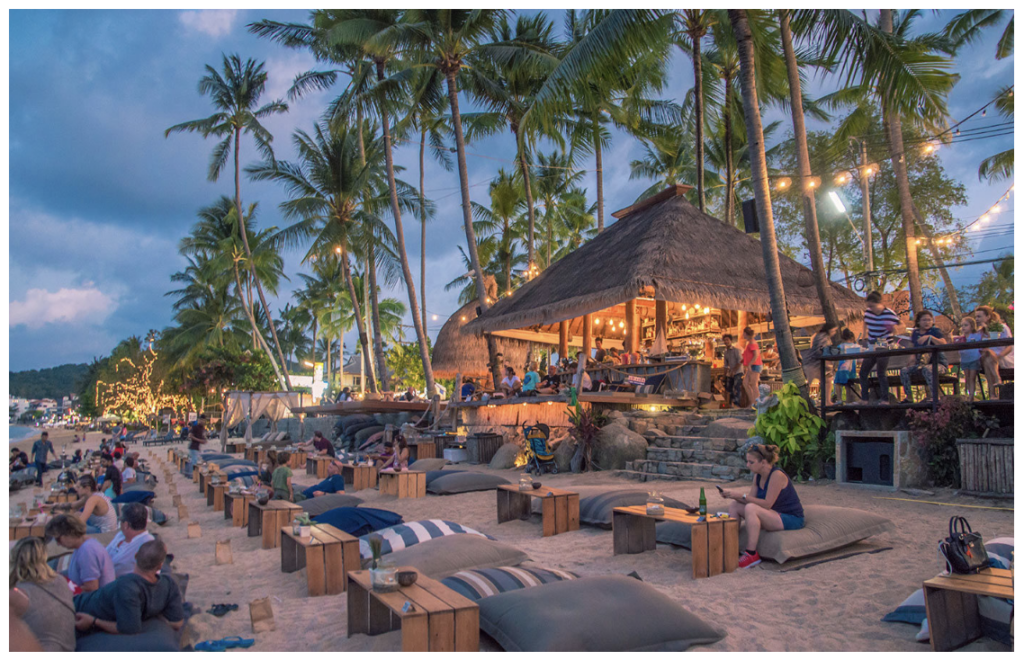 One of our reference images we pulled for the beach social hub
One of our reference images we pulled for the beach social hub
In the image above, we could see what we would want in the beach social hub. There’s the string of lights, a tiki hut bar, lots of lounge chairs / beds, drinks everywhere, and of course palm trees. Having 5–6 different reference images allowed our team to quickly capture what assets we’ll need to create.
We use the Sandbox marketplace to find assets we could potentially use. Sometimes, it’s easier to just buy the asset. But many times, we’ll need to create our own.
We find that these are roughly the number of custom assets we’ll need per size of LAND:
- 1×1: ~20 assets
- 2×2: ~50 assets
- 3×3: 90–100 assets
Build And Iterate
Creating a social hub in the metaverse is a lot like building software. Sometimes, we can have something that looks good on paper but look so-so when it’s implemented. Because of this, we leave room to add in those final details during the build phase not addressed by the concept drawing.
The concept drawing / schematic gets us 90% of the way. The final 10% we leave to the builder. The builder should have some amount of freedom to alter the guidelines in order to make things fit.
Since we treat this process more like building software, we use a modified SCRUM approach. Every week, we’ll use these questions to guide the build process.
- What did we accomplished last week?
- What are we looking to accomplish this week?
- Are there any blockers?
That’s it! This is our process to designing and building a social hub in The Sandbox Metaverse. Frankly, the process would be very similar for Decentraland, Minecraft or other metaverses.
I hope this guide has been useful for you in creating your own social hub.
Get more insights like this on the business and marketing of the metaverse delivered to your inbox. We’ll never spam you, ever.
Jack Liu
Digital marketing entrepreneur with a background in engineering, paid advertising, and product development. Founder of Tentango.
Related Posts
June 14, 2023
How To Successfully Launch Games on Roblox, with Zach Letter of Wonder Works
How can developers successfully launch games on Roblox? In my recent…
May 20, 2023
Branding Success: Guaranteed Engagement in The Sandbox
The Sandbox Metaverse is a really interesting opportunity for branded…
March 7, 2023
Metaverse Marketing – The Emerging Practice
As the digital world continues to evolve, businesses need to stay ahead of the…
